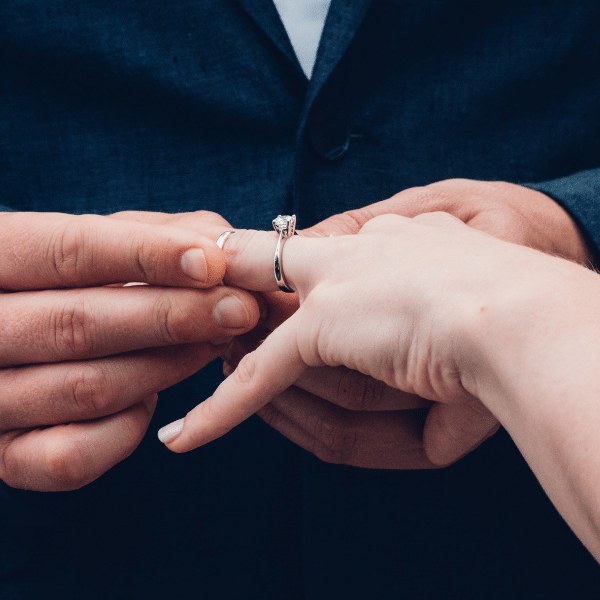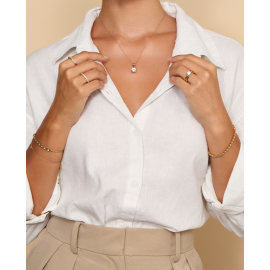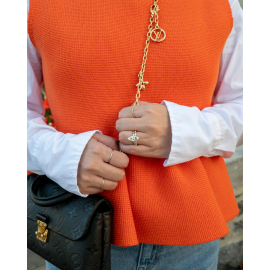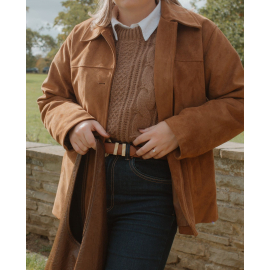Price match guarantee

We’ve teamed up with Klarna to provide flexible payment options, allowing you to shop the way you want. With Klarna, you can split your payment into 3 instalments or choose to pay later, making your shopping experience smoother and more convenient. Your order total must be between £100 and £499 to qualify.

We’ve teamed up with Klarna to provide flexible payment options, allowing you to shop the way you want. With Klarna, you can split your payment into 3 instalments or choose to pay later, making your shopping experience smoother and more convenient. Your order total must be between £100 and £499 to qualify.

May 17, 2022 | by Admin
It is law within the UK that every item of precious metal sold such as Platinum, Gold, Silver is stamped labelling the item with the type of metal it is. Platinum pieces which weigh less than 0.5 grams, 18ct Gold and Palladium pieces weighing less than 1.0 gram and Silver pieces weighing less than 7.78 grams are except from hallmark.
At Diamonds Factory all our products are hallmarked as per UK hallmarking law from London Assay Office (The GoldSmith Company)
The Goldsmiths' Company Assay Office is the oldest assay office in the United Kingdom. It has provided hallmarking services since The Goldsmiths' Company was founded in the 1300s. The company received its royal charter in 1327 and ranks 5th in order of precedence of the 12 Great Livery Companies of the City of London.
Hallmarking dates back to the 1300s when Edward I of England passed a law requiring any item made of silver, which was offered for sale, to be at least of equal quality as that of the coin of the realm (silver currency). The wardens of The Goldsmiths' Company were tasked with visiting workshops in the City of London to assay (test) silver articles. If these articles were found to be below standard they were originally destroyed and the metal forfeited to the King. If they passed, each article received the King's mark of authentication - the mark of a leopard's head. By 1478, there were several hundred workshops and merchants manufacturing silver articles in the City of London. It was not possible for the wardens to visit them all so the merchants were ordered to bring their items to Goldsmiths' Hall for testing and marking and a permanent Assay Office was established in the building. This is the origin of the term hallmark - struck with the King's mark at Goldsmiths' Hall.
In 1544 the Goldsmith's Company adopted the King's mark as their town mark and the mark of the leopard's head is now internationally recognised as the mark of this assay office.
The Goldsmiths's Company Assay Office is still based at Goldsmiths's Hall and remains the oldest company in Britain to be continually trading from the same site. However, it also has two satellite offices; at Greville Street in Hatton Garden in the heart of the London jewellery quarter and within a high security complex near London's Heathrow airport. It now has a new off-site facility within the Dalston-based jewellery manufacturer, Allied Gold. This is the first time in the Assay Office's 700 year history that it has opened permanent hallmarking services on a customer's premises.
In addition to hallmarking, the office has now expanded its range of services to support the jewellery trade and enforcement authorities. It offers a variety of specialist analytical services including nickel, lead & cadmium testing, antique silver dating, non-destructive compositional analysis, plating thickness measurement and a melt and assay service for scrap precious metal carried out in their fully independent on-site laboratory. Other services offered are a jewellery valuation service, laser marking, trading standards assistance, high quality photography and a comprehensive range of training and educational seminars, lectures and specialist events.






Getting engaged is one of the most momentous occasions in anyone’s life. To mark this special event, an engagement ring is presented by the person who proposes marriage. The tradition is believed to date back to ancient Rome where rings –commonly made of ivory, bone or iron – were not a sign of romance and promise, but rather to be worn as a sign of ownership. Luckily both the meaning and material of engagement rings have changed with time.
White Gold Round Diamond Engagement Ring
From £324
White Gold Round Diamond Engagement Ring
From £408
Yellow Gold Trilogy Diamond Engagement Ring
From £1,195
Prong Setting Plain Engagement Ring
From £422
4 Prong Yellow Diamond Halo Engagement Ring
From £1,474
Oval Halo Blue Sapphire Engagement Ring
From £1,186
Emerald Halo Emerald Engagement Ring
From £971
4 Prong Setting Side Stone Diamond Engagement Ring
From £813
Prong Setting Solitaire Diamond Engagement Ring
From £532
Prong Setting Oval Ruby Half Eternity Ring
From £469
With all the flutter and excitement of an engagement, you may be wondering how to wear an engagement ring. This article is a full guide to engagement ring etiquette, from what the engagement ring finger is, to if you should wear your engagement ring everyday.
What Hand and Finger Does the Engagement Ring Go on?
In most western countries, tradition dictates that the engagement ring be worn on the fourth finger (known commonly as the ring finger) of the left hand. The left ring finger is the fourth finger (next to your pinky or little finger). This long established custom is also carried out because that particular finger was thought to have a vein that ran directly to the heart – the ‘Vena Amoris’, which translates to ‘Vein of Love’. Although our modern-day understanding of anatomy has taught us that all fingers have venous connections to the heart, it’s a tradition that has continued in most cultures.
In some countries such as India, Norway, and Russia – it is more traditional to wear the engagement ring on the right hand. In Brazil engagement rings may be worn on the right hand and switched to the left after the couple walks down the aisle.
Cultural tradition tends to dictate the norm but everyone is different. While customs are widely followed, it really is the choice of the wearer. Whether you choose to wear it on your left or right hand, that’s not what matters. The ring is a symbol of your commitment and union together. It’s a symbol of love and devotion to your partner.
Keep reading to find out the meaning of each finger for wearing rings.
Wearing Other Rings on Your Ring Finger
There is an old wives’ tale that says wearing anything but an engagement ring on your left ring finger could be bad luck. But if you’re not the superstitious type, wear whatever ring you want! However, if you’re dating, wearing a ring on that particular finger could signify to others that you’re in a committed relationship.
Wearing Your Engagement Ring During Your Wedding Ceremony
It’s common for people to switch the engagement ring to their right hand before walking down the aisle so that their partner can easily slide on the wedding ring during the ceremony. It’s then topped off with your engagement ring later on. Some people even choose to have their wedding and engagement rings soldered together into one unified piece.
What Order Should I Wear the Engagement and Wedding Rings on My Ring Finger?
Many people follow the traditional style of wearing their rings; once they’ve said their vows, they’ll put their wedding ring on the same finger first and the engagement ring second. If you’ve opted for a wedding ring of a different material (for example if you have a simple yellow gold diamond wedding ring and a vintage white gold engagement ring), you may choose to wear your wedding ring on your left hand and your engagement ring on your right hand. This suits those with shorter fingers too.
Can You Wear Promise and Eternity Rings Together?
It gets a little more intricate and complicated when a third ring is included in this combination. But yes, you can wear your promise or eternity ring with your wedding and engagement rings. Some people already have a promise ring whereas others may get an eternity ring later on, when big occasions arise.
Nowadays, people sometimes choose to have a thinner wedding ring to make room for combining with a promise or eternity ring that represents other milestones in their lives, such as the birth of a child. Generally, promise, eternity and wedding rings tend to be worn on the same hand. This doesn’t work for everyone – particularly if you have an active lifestyle or your engagement and wedding rings are bigger. A great option is to wear these two on your left hand and your eternity ring on your third finger. Some even purchase their rings as a set so that they are the right shape and size to sit on the finger seamlessly.
Can You Wear Your Engagement Ring Every Day?
We don’t recommend you wear your engagement ring everyday. While it’s understandable that you’d want to, it’s important to avoid potential damage such as scratching the metal, harming the stones, or disfiguring the setting.
It’s probably wise to remove the ring when cleaning, going to the gym or participating in other physical activities. And removing your ring before bed is also a good idea. Having your engagement ring professionally cleaned and checked a couple of times a year will maintain its shine and will also ensure the ring hasn’t been damaged.
Thinking about asking your partner to marry you? Read our engagement ring guide for all you need to consider to purchase the perfect ring.